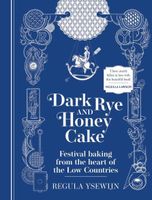Advertisement
Savouring Golden Age Art
Appears in
Published 2023
Dutch and Flemish still-life paintings of the Golden Age show products of the foreign trade that made the nation’s fortunes during their period of glory. They are case studies of 16th-century material culture. They were painted when the Southern Netherlands (current Belgium) and Italy were the centres of art and culture in Western Europe: an extraordinary moment in the history of art in Europe.
Although most frequently referred to as the ‘Dutch masters’, the style of painting originated in Flanders in what is now Belgium. At that time the area was part of the Spanish Netherlands (1556–1714). Pieter Aertsen (1508–1575) and Joachim Beuckelaer (c.1535–1575), both residents of Antwerp, were two of the first to paint kitchen and market scenes portrayed as still life. Beuckelaer learned the style of market and kitchen scenes from Aertsen, who was his uncle, and certainly pioneered the style in the Low Countries.

